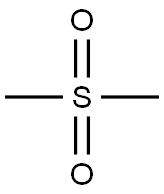A5257012
2,6-Lutidine , Analysis of standard products, ≥99.5%(GC) , 108-48-5
Synonym(s):
2,6-Dimethylpyridine;2,6-Lutidine
CAS NO.:108-48-5
Empirical Formula: C7H9N
Molecular Weight: 107.15
MDL number: MFCD00006345
EINECS: 203-587-3
Update time: 2022-07-08
PRODUCT Properties
| Melting point: | ?6 °C (lit.) |
| Boiling point: | 143-145 °C (lit.) |
| Density | 0.92 g/mL at 25 °C (lit.) |
| vapor pressure | 5.5 hPa (20 °C) |
| FEMA | 3540 | 2,6-DIMETHYLPYRIDINE |
| refractive index | n |
| Flash point: | 92 °F |
| storage temp. | −20°C |
| solubility | Chloroform (Soluble), Methanol (Slightly) |
| pka | 6.65(at 25℃) |
| form | Liquid |
| color | Clear |
| Odor | at 1.00 % in dipropylene glycol. nutty amine woody bready cocoa oily |
| Odor Type | nutty |
| biological source | synthetic |
| Water Solubility | 40 g/100 mL (20 ºC) |
| Sensitive | Hygroscopic |
| Merck | 14,5616 |
| JECFA Number | 1317 |
| BRN | 105690 |
| Dielectric constant | 7.3300000000000001 |
| Stability: | Stable. Flammable. Incompatible with strong oxidizing agents, acid chlorides, acids, chloroformates. Protect from moisture. |
| LogP | 0.12 at 25℃ |
| CAS DataBase Reference | 108-48-5(CAS DataBase Reference) |
| NIST Chemistry Reference | Pyridine, 2,6-dimethyl-(108-48-5) |
| EPA Substance Registry System | 2,6-Dimethylpyridine (108-48-5) |
Description and Uses
2,6-Lutidine is used as a solvent in organic synthesis and as a sterically hindered mild base. It is also used as a vulcanization accelerator for dyes, resins and rubber. It also acts as a food additive.
Safety
| Symbol(GHS) |   GHS02,GHS07 |
| Signal word | Warning |
| Hazard statements | H226-H302-H315-H319 |
| Precautionary statements | P210-P301+P312+P330-P302+P352-P305+P351+P338 |
| Hazard Codes | Xn,F,Xi |
| Risk Statements | 10-22-36/37/38-20/21/22 |
| Safety Statements | 26-36/37-16-36-36/37/39 |
| RIDADR | UN 1993 3/PG 3 |
| WGK Germany | 3 |
| RTECS | OK9700000 |
| F | 8 |
| Hazard Note | Irritant/Flammable |
| TSCA | Yes |
| HazardClass | 3 |
| PackingGroup | III |
| HS Code | 29333999 |
| Hazardous Substances Data | 108-48-5(Hazardous Substances Data) |
| Toxicity | LD50 orally in Rabbit: 400 mg/kg LD50 dermal Rabbit > 1000 mg/kg |





